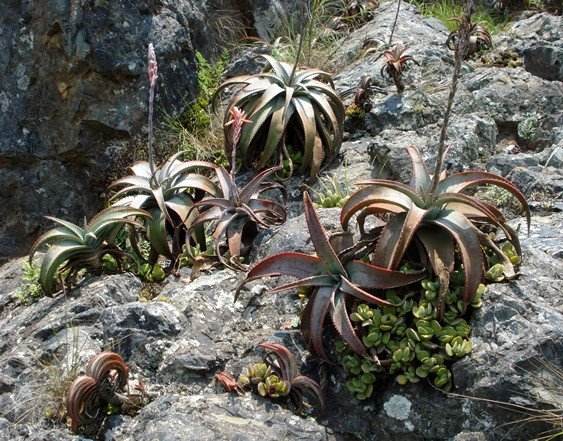Aloe suprafoliata colonising rock

Author: Ivan Lätti
Photographer: Judd Kirkel Welwitch
This Aloe suprafoliata colony on rock comprises plants of different ages and life stages. The youngest plants in picture show leaves on top of each other, spreading in fans. The early leaf arrangement is distichous in two opposing ranks, their tips curving down in elegant accord. Then follows twisting into an early near rosette, as shown by an intermediate plant on the left. Plants bigger than that exhibit the mature, dense rosettes with pronounced recurving or down-curving of the leaf tips.
The bluish green to grey green blades are smooth and unspotted with faint vein lines sometimes visible on the surfaces. The upper leaf part, or more of it if the season is harsh, is usually reddish to red brown. The upper surfaces are nearly flat with margins curved up, the lower surfaces are convex. The last few centimetres of a grown leaf are dry and twisted. Leaves are from 30 cm to 40 cm long and about 7 cm wide at the base.
Only the margins are armed with triangular (actually three-dimensional, so deltoid), and sometimes two-tipped spines. The spines are often red brown in colour and sharp-tipped. These spines or teeth are 2 mm to 5 mm long and spaced from 5 mm to 10 mm along the margins (Van Wyk and Smith, 2003; Pooley, 1998; Reynolds, 1974; Jeppe, 1969; iNaturalist).

